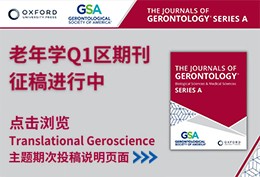Current Biology ( IF 8.1 ) Pub Date : 2024-01-19 , DOI: 10.1016/j.cub.2023.12.070
Maaike J Bierenbroodspot 1 , Tatyana Darienko 1 , Sophie de Vries 1 , Janine M R Fürst-Jansen 2 , Henrik Buschmann 3 , Thomas Pröschold 4 , Iker Irisarri 5 , Jan de Vries 6

|
Streptophytes are best known as the clade containing the teeming diversity of embryophytes (land plants).1,2,3,4 Next to embryophytes are however a range of freshwater and terrestrial algae that bear important information on the emergence of key traits of land plants. Among these, the Klebsormidiophyceae stand out. Thriving in diverse environments—from mundane (ubiquitous occurrence on tree barks and rocks) to extreme (from the Atacama Desert to the Antarctic)—Klebsormidiophyceae can exhibit filamentous body plans and display remarkable resilience as colonizers of terrestrial habitats.5,6 Currently, the lack of a robust phylogenetic framework for the Klebsormidiophyceae hampers our understanding of the evolutionary history of these key traits. Here, we conducted a phylogenomic analysis utilizing advanced models that can counteract systematic biases. We sequenced 24 new transcriptomes of Klebsormidiophyceae and combined them with 14 previously published genomic and transcriptomic datasets. Using an analysis built on 845 loci and sophisticated mixture models, we establish a phylogenomic framework, dividing the six distinct genera of Klebsormidiophyceae in a novel three-order system, with a deep divergence more than 830 million years ago. Our reconstructions of ancestral states suggest (1) an evolutionary history of multiple transitions between terrestrial-aquatic habitats, with stem Klebsormidiales having conquered land earlier than embryophytes, and (2) that the body plan of the last common ancestor of Klebsormidiophyceae was multicellular, with a high probability that it was filamentous whereas the sarcinoids and unicells in Klebsormidiophyceae are likely derived states. We provide evidence that the first multicellular streptophytes likely lived about a billion years ago.
中文翻译:

对第一个多细胞链霉植物的系统发育见解
链霉植物最出名的是包含大量胚胎植物(陆地植物)多样性的分支。1234 然而,除了胚胎植物之外,还有一系列淡水和陆生藻类,它们承载着关于陆地植物关键性状出现的重要信息。其中,Klebsormidiophyceae 脱颖而出。克雷伯索氏菌科 (Klebsormidiophyceae) 在各种环境中茁壮成长——从平凡的(普遍出现在树皮和岩石上)到极端的(从阿塔卡马沙漠到南极洲)——可以表现出丝状的身体结构,并作为陆地栖息地的殖民者表现出非凡的适应力。56 目前,缺乏强有力的 Klebsormidiophyceae 系统发育框架阻碍了我们对这些关键性状的进化历史的理解。在这里,我们利用可以抵消系统性偏差的先进模型进行了系统发育分析。我们对 Klebsormidiophyceae 的 24 个新转录组进行了测序,并将它们与以前发表的 14 个基因组和转录组数据集相结合。使用基于 845 个基因座和复杂混合模型的分析,我们建立了一个系统发育框架,将 Klebsormidiophyceae 的六个不同属划分为一个新的三级系统,在 8.3 亿多年前具有很深的分歧。 我们对祖先状态的重建表明 (1) 陆地-水生栖息地之间多次过渡的进化历史,茎 Klebsormidiales 比胚生植物更早征服了土地,以及 (2) Klebsormidiophyceae 的最后一个共同祖先的身体结构是多细胞的,它很可能是丝状的,而 Klebsormidiophyceae 中的肉素类化合物和单细胞可能是衍生状态。我们提供的证据表明,第一批多细胞链霉菌可能生活在大约 10 亿年前。

































 京公网安备 11010802027423号
京公网安备 11010802027423号